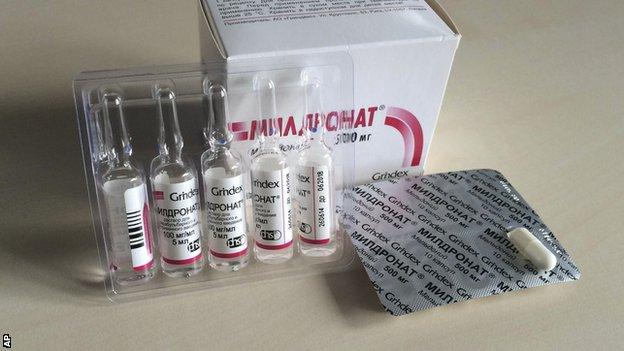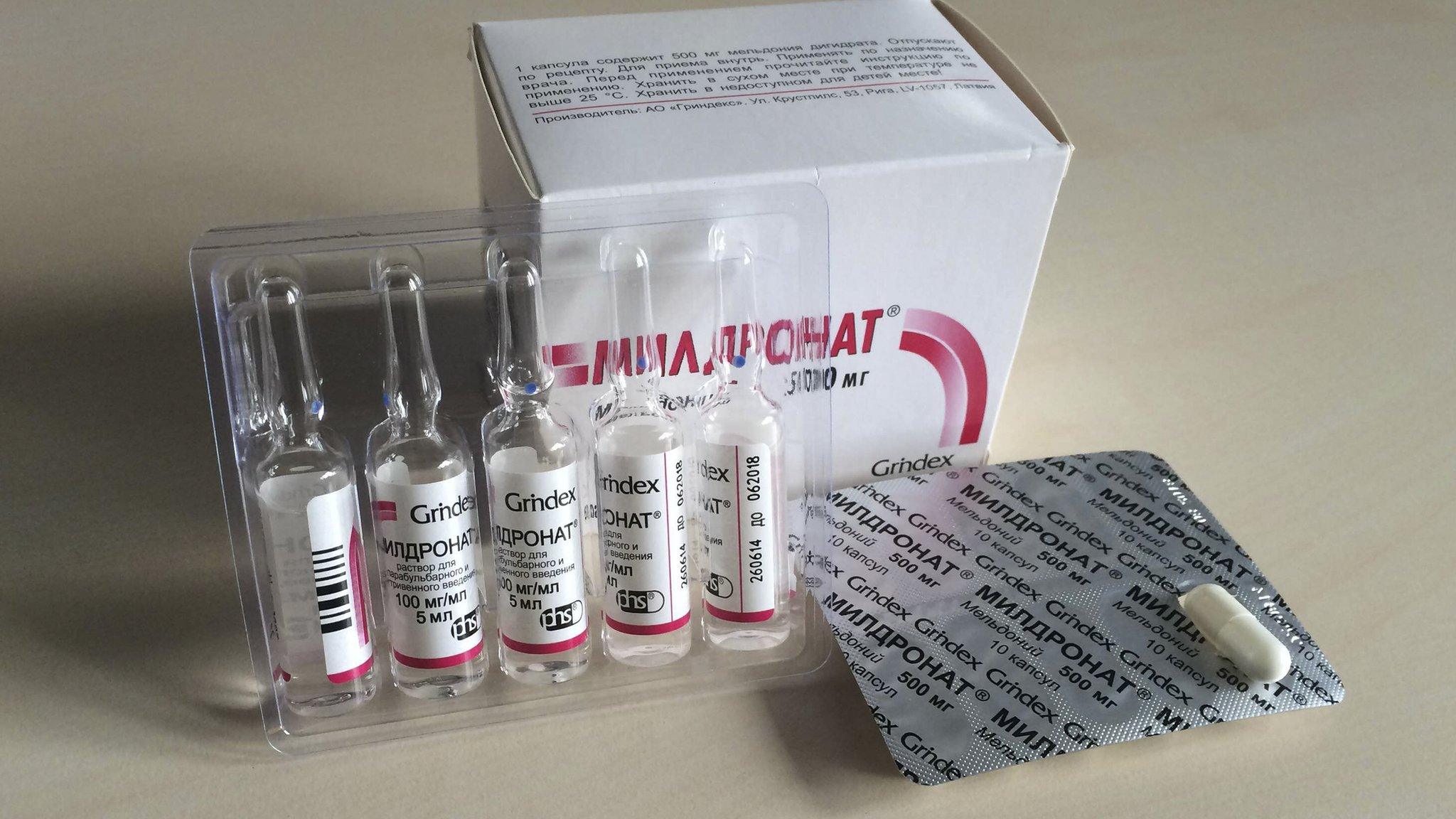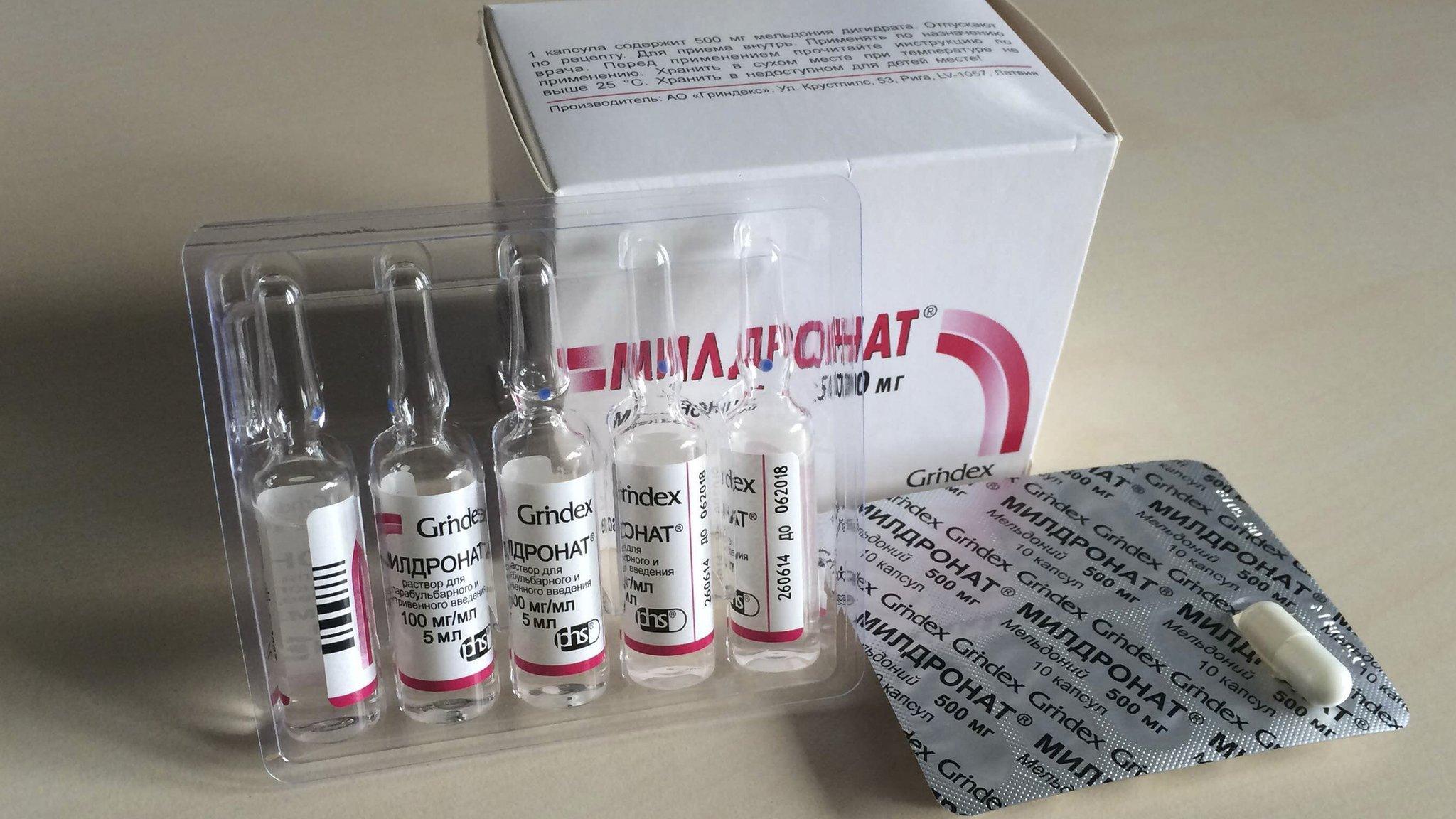Meldonium: 27 Russian sportspeople test positive for banned drug
- Published

Meldonium, also known as mildronate, was banned by the World Anti-Doping Agency on 1 January
Twenty-seven Russian sportspeople have tested positive for meldonium this year, according to the Russian sports minister.
Tennis player Maria Sharapova failed a doping test after the World Anti-Doping Agency banned the drug on 1 January.
Four Russian athletes, who have not been named, tested positive for the substance this week.
"Twenty-seven have tested positive for meldonium and there are some 127 cases in the world," said Vitaly Mutko.
Russia's athletics federation is suspended from international competition for its alleged involvement in widespread doping, with a decision on potential reinstatement due in May.
Dmitry Shlyakhtin, head of the All-Russia Athletic Federation, said the latest positive tests will not "aggravate" that "complex" decision.
Russia's international ban - which includes this summer's Rio Olympic Games - applies only to its athletics federation and followed an independent World Anti-Doping Agency report last year that alleged "state-sponsored doping".
Meldonium |
|---|
Thought to improve stamina and endurance |
Designed to treat ischemia and used by diabetes suffers |
Banned by Wada since 1 January 2016 |
Featured on Wada's watch list in 2015 |
Last week, Russia's four-time breaststroke world champion Yuliya Efimova failed an out-of-competition test.
World number seven Sharapova, meanwhile, failed a drugs test at the Australian Open.
The 28-year-old said she had been taking meldonium since 2006 for health reasons.
According to Wada, a substance may be "considered" for the prohibited list if it meets two of the following three criteria:
Enhances performance
Poses a threat to athlete health
Violates the spirit of sport
A substance can be added to the prohibited list without first featuring on the watch list.
Grindeks, the Latvian company that produces the drug, says meldonium can take "several months" to leave the body.
It said the "terminal elimination" of the drug depends on a variety of factors such as dose, duration of treatment and sensitivity of testing methods.
- Published9 March 2016

- Published8 March 2016

- Published9 March 2016

- Published12 January 2016

- Published11 March 2016

- Published17 March 2016

- Published13 November 2015
